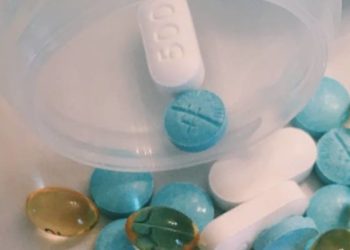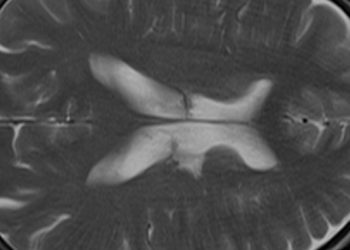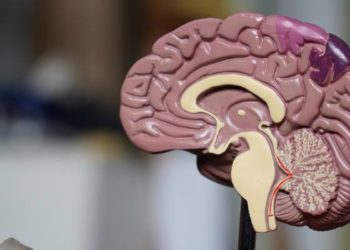Intrathecal gene therapy as a treatment for giant axonal neuropathy
1. In this dose-escalation study, using intrathecal gene transfer with scAAV9/JeT-GAN demonstrated potential improvement in motor function.
2. Adverse events related to gene therapy included scoliosis, urinary tract infections, and upper respiratory tract infections.
Evidence Rating Level: 2 (Good)
Study Rundown: Giant axonal neuropathy is an autosomal recessive neurodegenerative disorder that results from loss of function mutations in the gene that codes for gigaxonin (GAN). Gigaxonin regulates the turnover of intermediate filaments, thus when it is absent, there is an accumulation of intermediate filaments leading to abnormal axonal swellings. A self-complementary adeno-associated viral (AAV) serotype 9 (scAAV9) vector was created to carry a codon-optimized human GAN transgene. The study used intrathecal dose-escalation of scAAV9/JeT-GAN in children with giant axonal neuropathy, focusing on the main outcome, safety, and the secondary outcome, a 95% or higher posterior probability to slow the rate of change. Data collection began with an observational study of childhood disorders to understand the natural history of giant axonal neuropathy. The natural history of the disease varied from 3.7 to 31.5 months before the dose of scAAV9/JeT-GAN was given. Bayesian efficacy analysis and hierarchical models were used for statistical analysis. The intrathecal dose of the AAV vector was associated with benefits for motor function but also showed adverse effects. Overall, there were a few indications for the therapeutic benefit of motor skills and electrophysiological measures in individuals with giant axonal neuropathy.
Click to read the study in NEJM
In-Depth [dose-escalation study]: In this dose-escalation study, a total of 14 individuals participated and received one of four doses of scAAV9/JeT-GAN: two participants got 3.5×1013 vg, four participants got 1.2×1014 vg, five participants got 1.8×1014 vg, and three participants got 3.5×1014 vg. Participants were eligible for the study if they had no residual gigaxonin protein expression and individuals were AAV9 seropositive or negative at baseline. When the doses were first administered, the mean age of the participants was 9.1 years (range 6.3 to 14.5). During the safety observation period of 68.7 months (range 8.6 to 90.5), 682 adverse events occurred, with 129 possibly being related to treatment, and 48 serious adverse events occurred as well. Of these serious adverse events, the most common ones were scoliosis (n=9), urinary tract infections (n=6), and upper respiratory tract infections (n=5). The slope of the curve of the MFM-32 percent score experienced a mean change of -0.54 percentage points (95% credible interval, -7.48 to 6.28), 3.23 percentage points (95% credible interval, -1.27 to 7.65) 5.32 points (95% credible interval, 1.07 to 9.57), and 3.43 points (95% credible interval, -1.89 to 8.82) for the 3.5×1013 -vg dose group, the 1.2×1014 -vg dose group, the 1.8×1014 vg dose group, and the 3.5×1014 -vg dose group respectively. The only group above the efficacy threshold at one year was the 1.8×1014 vg-dose group, with a probability of change in slope being 99% (95% credible interval, 99 to 99). Along with these values are posterior probabilities for slopes slowing, which were 44% (95% credible interval, 43 to 44); 92% (95% credible interval, 92 to 93); 99% (95% credible interval, 99 to 99), and 90% (95% credible interval, 89 to 90). Overall, ScAAV9/JeT-GAN intrathecal gene transfer was associated with adverse events in patients with giant axonal neuropathy.
Image: PD
©2024 2 Minute Medicine, Inc. All rights reserved. No works may be reproduced without expressed written consent from 2 Minute Medicine, Inc. Inquire about licensing here. No article should be construed as medical advice and is not intended as such by the authors or by 2 Minute Medicine, Inc.







